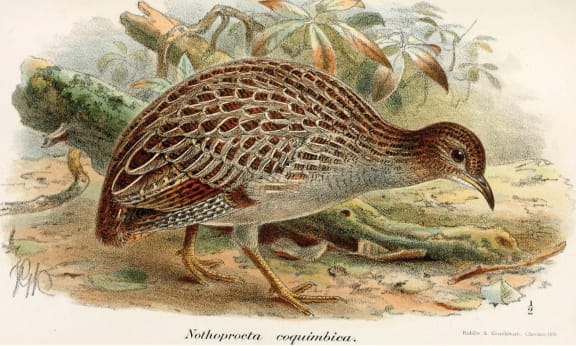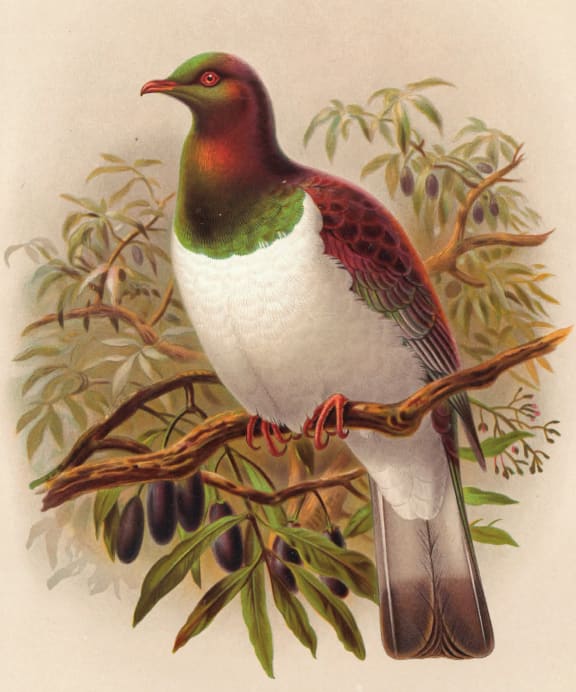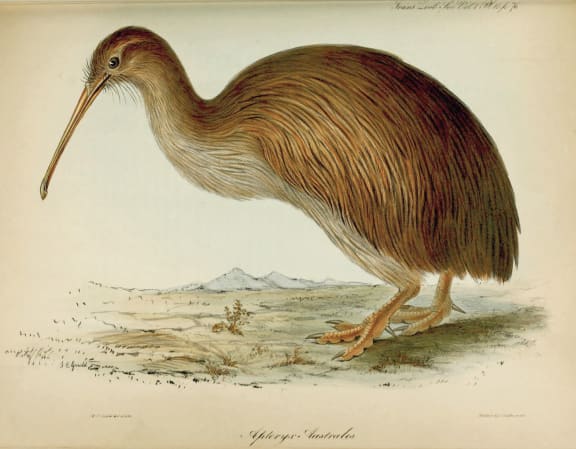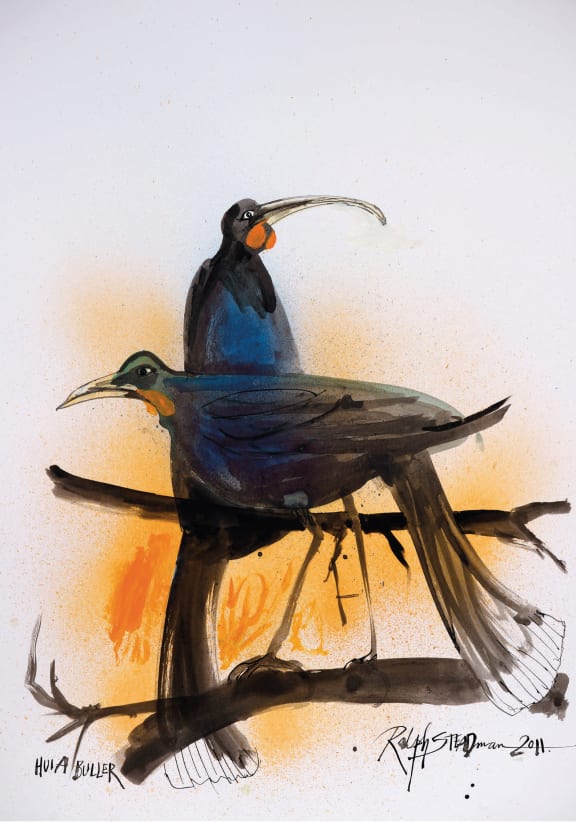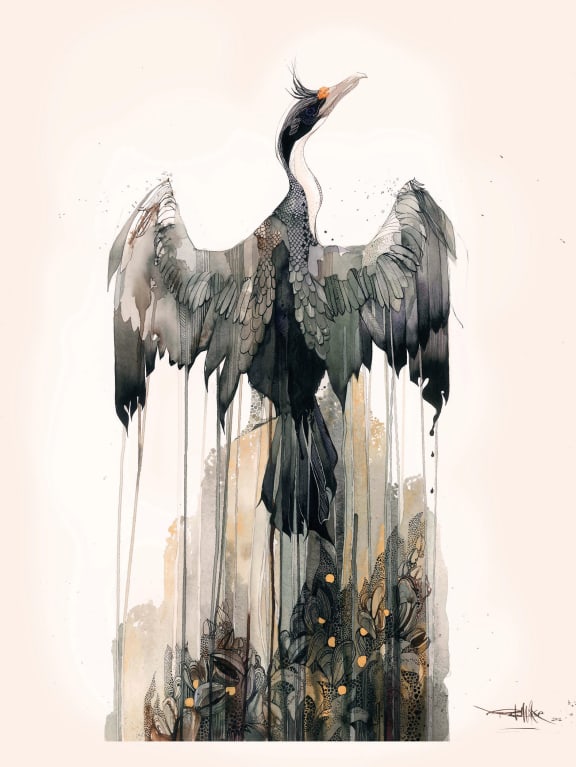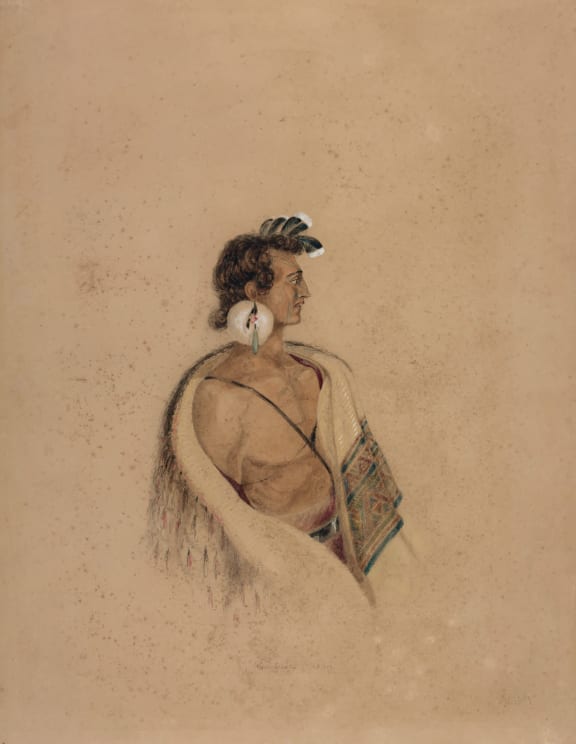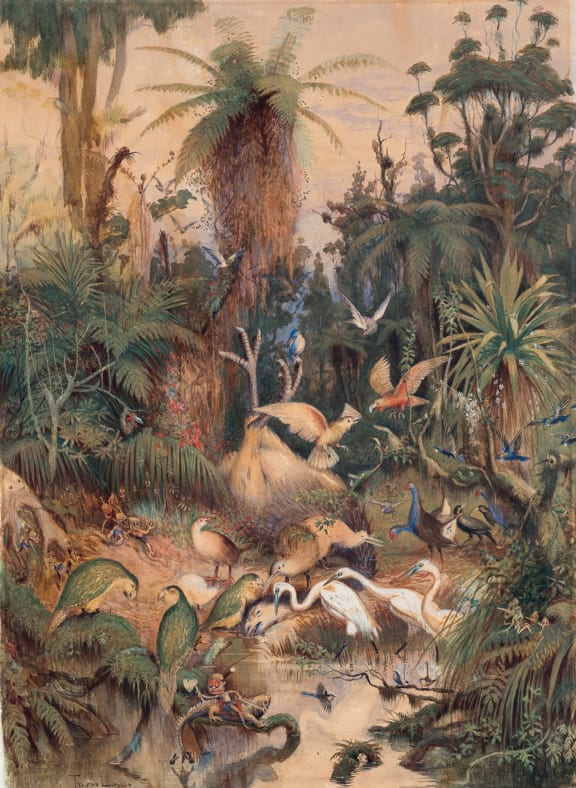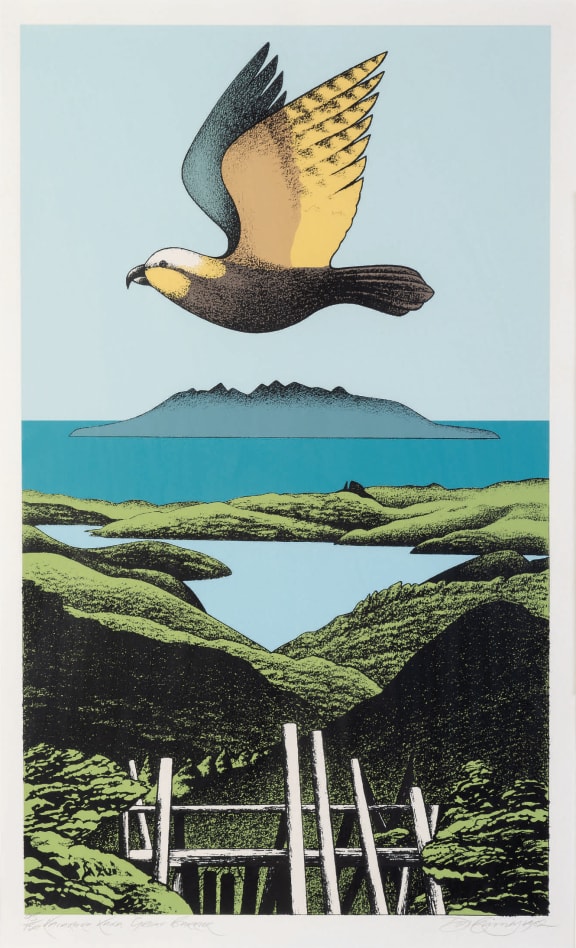
Photo: AFP
New Zealanders may have taken so kindly to the kiwi as a national symbol because we like to see its characteristics in ourselves, says Geoff Norman.
"It's a fairly modest little bird, it's not flashy, but it's quite unique. It's very feisty."
The Wellington "amateur ornithologist" has a new book out this month about New Zealand native birds. Birdstories is about the discovery of our native birds, their place in both Pākehā and Māori worlds, their survival and conservation, and the art they've inspired.
Norman's first book Buller's Birds of New Zealand was a tribute to the 1888 book that really brought the world's attention to our birds – Walter Buller's"outstanding" A History of the Birds of New Zealand.
- Listen to Geoff Norman talk with Kim Hill about Buller's Birds of New Zealand here.

A portrait of Sir Walter Buller by Ethel Mortlock Photo: By Ethel Mortlock (1878-1928) (Museum of New-Zealand) [Public domain], via Wikimedia Commons
Walter Lawry Buller was born in the Hokianga in 1839 could speak te reo and knew many Māori people. His book had a significant Māori contribution, which was unusual at the time, Norman says.
Danish-born artist John Gerard Keulemans was his illustrator.
Norman sourced a lot of the images in Birdstories from the internet – particularly the Biodiversity Heritage Library which has a number of digitised old journals from the world's major museums.
He also travelled to England and went through the illustrations made on Captain Cook's voyages.
Some images from Birdstories:
So what makes a bird qualify as a New Zealand native?
Basically, any bird that has arrived here under its own steam, Norman says.
Most of our native birds were originally blown over here from Australia by storms.
And some are relatively recent arrivals – the welcome swallow only arrived this century and is already common around the country.
The kōkako is one of Norman's particular favourites – "a unique bird with a beautiful call"
- Listen to the kōkako here.
Before the kiwi, the moa was our national symbol "but they possibly decided an extinct bird wasn't so good", Norman says.
In the first decade of the 20th century, the kiwi became associated with New Zealand sports teams, but it wasn't until our WWI soldiers were nicknamed 'Kiwis' that it spread to the whole population.
"It's a fairly modest little bird, it's not flashy, but it's quite unique. It's very feisty. They're probably all characteristics we'd like to see in ourselves."
Our namesake is in trouble, though.
In the 1920s, there were about six million wild kiwi, but today there is only 1 percent of that number and it's falling every year, Norman says.

Geoff Norman Photo: © Mark Tantrum
Earlier this year, Predator Free Wellington and Capital Kiwi received funding to eradicate possums, rats and stoats with a view to bringing the kiwi back to the capital.
Norman is impressed by the energy groups like these are putting into conservation as a huge amount of resources, determination and political will be required for New Zealand to become predator-free by 2050, he says.
When did we start trying to conserve New Zealand native birds?
The Polynesians who arrived in the 13th century found birds a good food source and many of the larger ones disappeared within 100 years of their arrival, but even as late as the mid-20th century there was debate amongst scientists about whether the decline of NZ native birds was actually caused by humans.
"There was a feeling that they were dying out anyway."
Ornithologist Charles Fleming played an important role in asserting that humans were responsible, Norman says.

Photo: Supplied/ Tony Stoddard
For Māori, birds have always been a very important food source, and there is still conflict over whether kererū should be available as food as muttonbirds are in the South Island.
"When kererū were first denied to the Māori, a lot of Māori said 'how come we're not allowed to use a few kererū for food when further south the settlers burning off swathes of bush and denying them their habitat?' A lot of people still find that quite hard to understand."
Check out the RNZ collection of bird stories and songs here.
Listen to all of the bird calls from Morning Report here.
